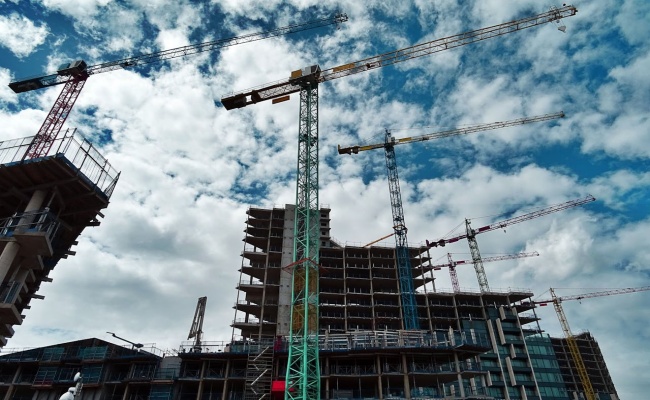The national budget tabled on March 12 contained one eye-wateringly large number: a commitment to spend more than R1-trillion on the country’s infrastructure. Finance minister Enoch Gondongwana announced the allocation of an additional R46.7bn to key infrastructure projects, boosting spending by national, provincial and local government, as well as state-owned companies and other public entities over the next three years to R1.03-trillion.
This investment will be key to boosting economic growth in South Africa. Growth has averaged a meagre 0.8% a year since 2012, resulting in high unemployment, worsening inequality, weakened public services and low investment confidence. The government has responded by setting an ambitious target of 3% GDP growth, significantly higher than forecasts from the South African Reserve Bank and the International Monetary Fund. To achieve its target, the government has to accelerate infrastructure investment – one of the most powerful tools for stimulating economic growth. Beyond its direct impact, infrastructure investment unlocks broader economic activity, strengthening industrial competitiveness, enabling business expansion, and supporting long-term job creation.
Infrastructure is more than just roads, ports and power plants; it is the backbone of a functioning economy and a key driver of long-term growth. But South Africa faces a chronic infrastructure deficit – evidenced by power shortages, failing transport networks and deteriorating water systems. With South Africa’s fiscus under significant strain, urgent intervention to enable private sector participation in these critical sectors is needed to fulfil the country’s investment needs.
Fast-tracking reform
Attracting adequate funding requires structural reforms that ensure both public and private sector investment into key industries. Recognising that years of stagnation stem from systemic inefficiencies and policy failures, the government launched Operation Vulindlela (OV) in 2020, a joint initiative between the presidency and National Treasury, aimed at fast-tracking reforms to unlock economic growth and job creation.
The first phase of OV targeted regulatory barriers in energy, transport, water, digital communications and the visa regime. It implemented 56 concrete actions across these sectors, unlocking R500bn in new investment. While challenges remain, OV has already been crucial in enabling private investment in electricity generation, addressing energy supply constraints and ending load-shedding. It also facilitated the long-delayed auction of new spectrum after more than a decade of setbacks.
In his state of the nation address last month, President Cyril Ramaphosa announced the government would invest more than R940bn in infrastructure over the next three years, with R375bn allocated to state-owned enterprises. However, public funding alone is clearly insufficient to break the cycle of stagnation. Private sector participation – unlocking institutional capital from pension funds, development finance institutions, and private infrastructure funds – is vital in bridging the financing gap.
Another key area primed for private investment is South Africa’s water infrastructure. The government’s proposal to ring-fence water revenue for maintenance and upgrades should establish a bankable model that attracts investment. With an estimated R1.2-trillion required for water and sanitation infrastructure by 2030, private sector participation will be essential in ensuring long-term water security. The Lesotho Highlands Water Project, a major Trans-Caledon Tunnel Authority initiative, has already demonstrated the sector’s job-creating potential, supporting 8,500 temporary construction jobs.
Restoring Transnet’s coal and iron ore rail networks is another opportunity ripe for private investment. These are essential economic arteries that drive mineral exports and support industrial activity, yet years of neglect and inefficiencies have strangled capacity, curbed exports and hampered economic growth.
At a tipping point
While phase 1 of OV has delivered important reforms, South Africa still faces a tipping point. The collapse of local governance, the fragility of state-owned enterprises and the urgency of energy and logistics reform leave little room for delay – without decisive action, economic stagnation will deepen. Success will not be measured by policies passed but by the alignment of businesses, investors and government reformers in removing barriers and unlocking capital. The end goal must be sustained, inclusive growth that fundamentally alters the country’s economic trajectory.
Phase 2 of OV will build on these efforts, focusing on local government reform, advancing digital infrastructure and unlocking public land for affordable housing. Its success will depend on the stability of the government of national unity and its ability to drive reform with urgency.
These are not abstract policy goals; they are the foundations for job creation. When basic services function, businesses can expand. When digital infrastructure improves, new industries emerge. When people live closer to economic opportunities, productivity rises.
The ultimate measure of success is job creation. Policies need to drive employment and economic expansion. South Africa cannot afford to wait – only decisive action can drive meaningful progress.
Sign up to Currency’s weekly newsletters to receive your own bulletin of weekday news and weekend treats. Register here.









